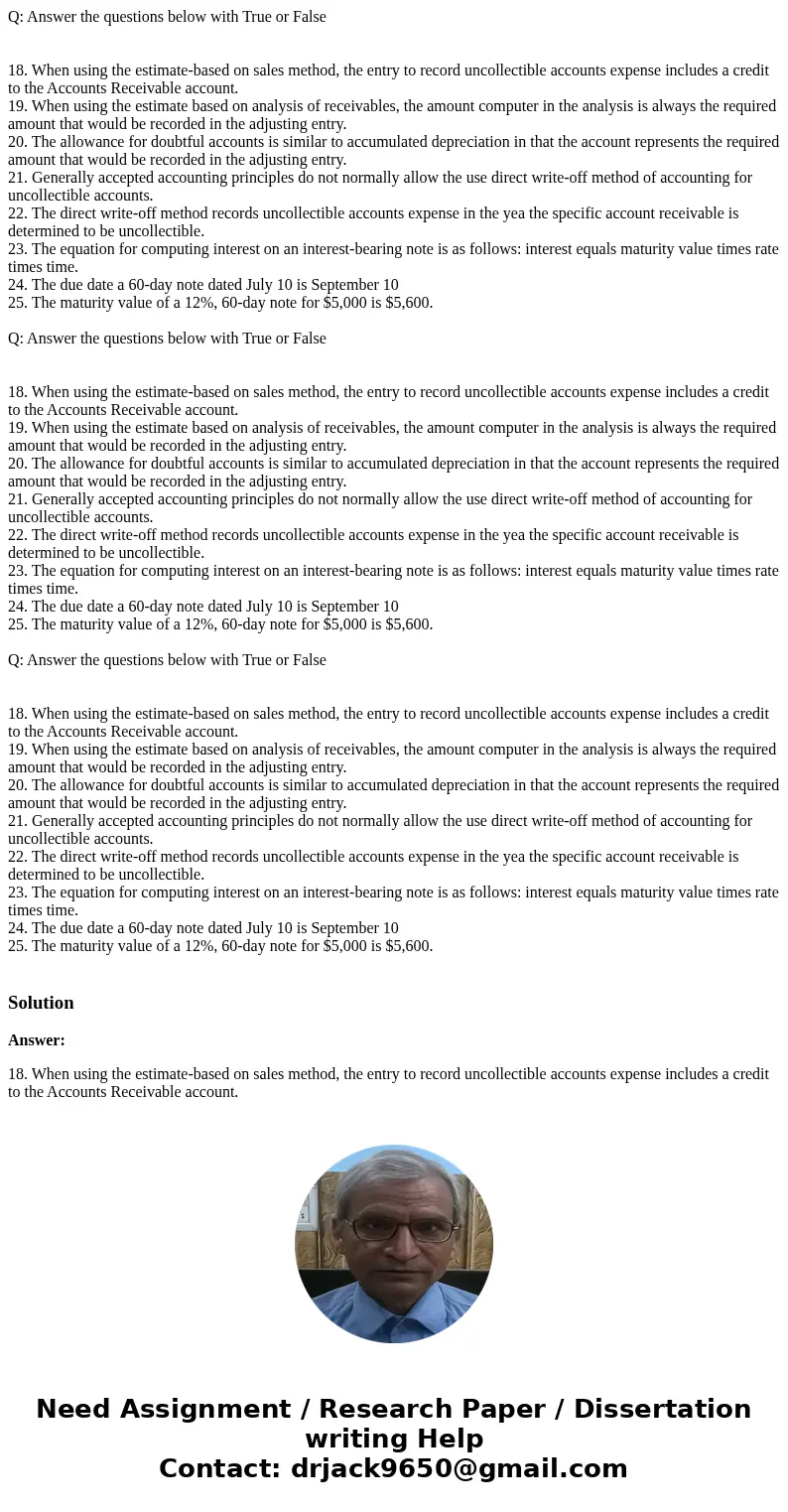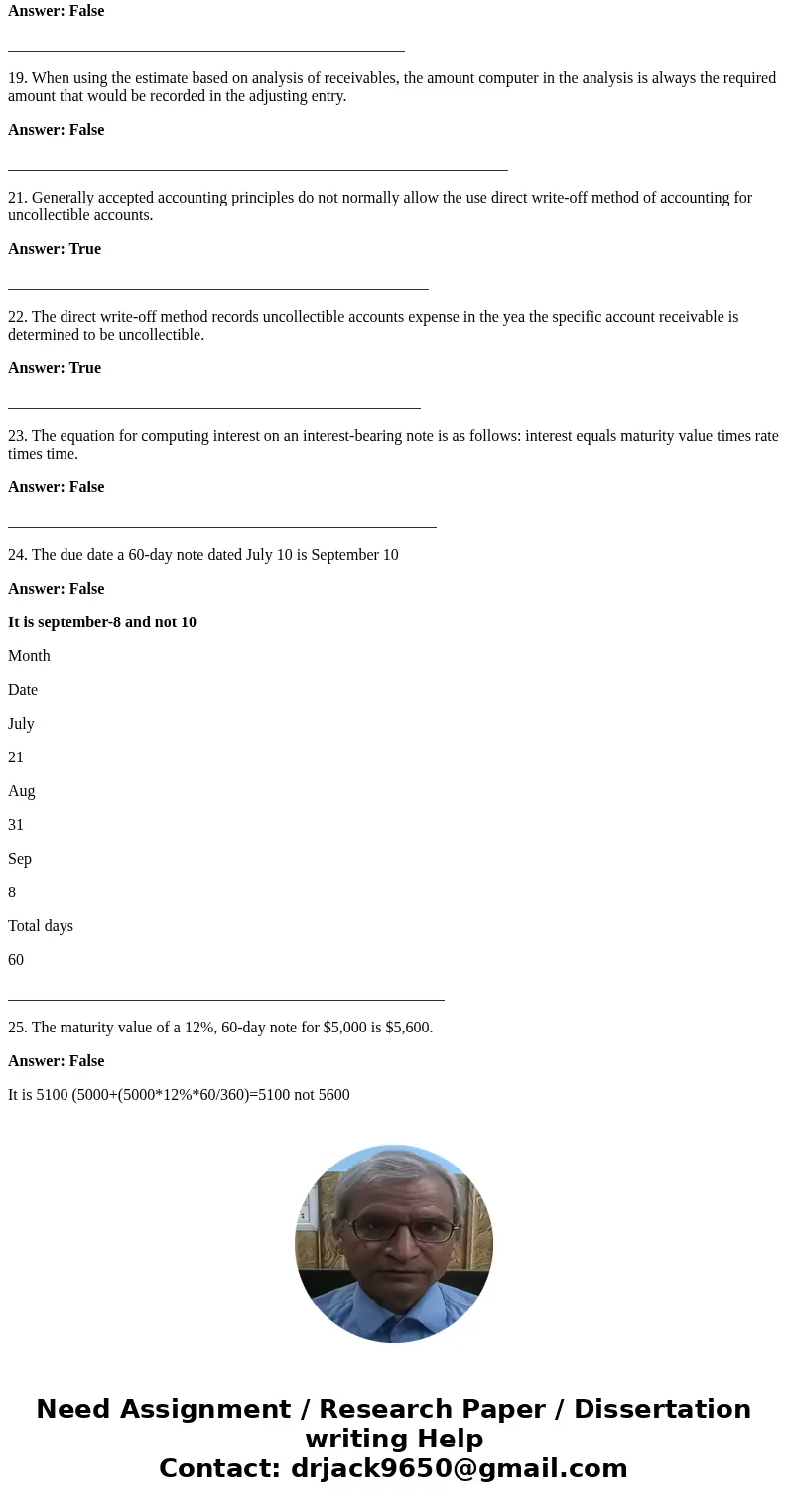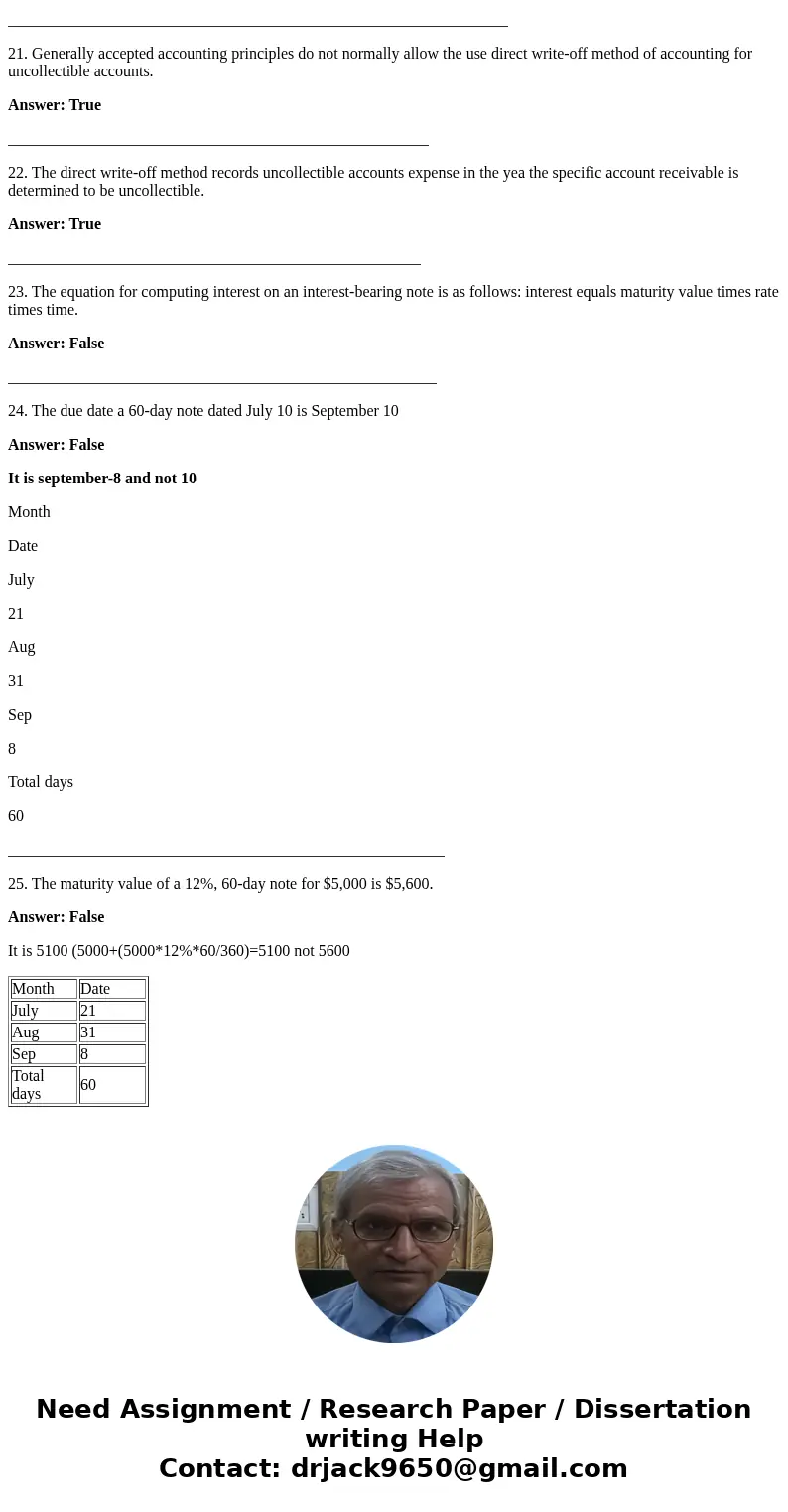Q: Answer the questions below with True or False
18. When using the estimate-based on sales method, the entry to record uncollectible accounts expense includes a credit to the Accounts Receivable account.
19. When using the estimate based on analysis of receivables, the amount computer in the analysis is always the required amount that would be recorded in the adjusting entry.
20. The allowance for doubtful accounts is similar to accumulated depreciation in that the account represents the required amount that would be recorded in the adjusting entry.
21. Generally accepted accounting principles do not normally allow the use direct write-off method of accounting for uncollectible accounts.
22. The direct write-off method records uncollectible accounts expense in the yea the specific account receivable is determined to be uncollectible.
23. The equation for computing interest on an interest-bearing note is as follows: interest equals maturity value times rate times time.
24. The due date a 60-day note dated July 10 is September 10
25. The maturity value of a 12%, 60-day note for $5,000 is $5,600.
Q: Answer the questions below with True or False
18. When using the estimate-based on sales method, the entry to record uncollectible accounts expense includes a credit to the Accounts Receivable account.
19. When using the estimate based on analysis of receivables, the amount computer in the analysis is always the required amount that would be recorded in the adjusting entry.
20. The allowance for doubtful accounts is similar to accumulated depreciation in that the account represents the required amount that would be recorded in the adjusting entry.
21. Generally accepted accounting principles do not normally allow the use direct write-off method of accounting for uncollectible accounts.
22. The direct write-off method records uncollectible accounts expense in the yea the specific account receivable is determined to be uncollectible.
23. The equation for computing interest on an interest-bearing note is as follows: interest equals maturity value times rate times time.
24. The due date a 60-day note dated July 10 is September 10
25. The maturity value of a 12%, 60-day note for $5,000 is $5,600.
Q: Answer the questions below with True or False
18. When using the estimate-based on sales method, the entry to record uncollectible accounts expense includes a credit to the Accounts Receivable account.
19. When using the estimate based on analysis of receivables, the amount computer in the analysis is always the required amount that would be recorded in the adjusting entry.
20. The allowance for doubtful accounts is similar to accumulated depreciation in that the account represents the required amount that would be recorded in the adjusting entry.
21. Generally accepted accounting principles do not normally allow the use direct write-off method of accounting for uncollectible accounts.
22. The direct write-off method records uncollectible accounts expense in the yea the specific account receivable is determined to be uncollectible.
23. The equation for computing interest on an interest-bearing note is as follows: interest equals maturity value times rate times time.
24. The due date a 60-day note dated July 10 is September 10
25. The maturity value of a 12%, 60-day note for $5,000 is $5,600.
Answer:
18. When using the estimate-based on sales method, the entry to record uncollectible accounts expense includes a credit to the Accounts Receivable account.
Answer: False
__________________________________________________
19. When using the estimate based on analysis of receivables, the amount computer in the analysis is always the required amount that would be recorded in the adjusting entry.
Answer: False
_______________________________________________________________
21. Generally accepted accounting principles do not normally allow the use direct write-off method of accounting for uncollectible accounts.
Answer: True
_____________________________________________________
22. The direct write-off method records uncollectible accounts expense in the yea the specific account receivable is determined to be uncollectible.
Answer: True
____________________________________________________
23. The equation for computing interest on an interest-bearing note is as follows: interest equals maturity value times rate times time.
Answer: False
______________________________________________________
24. The due date a 60-day note dated July 10 is September 10
Answer: False
It is september-8 and not 10
Month
Date
July
21
Aug
31
Sep
8
Total days
60
_______________________________________________________
25. The maturity value of a 12%, 60-day note for $5,000 is $5,600.
Answer: False
It is 5100 (5000+(5000*12%*60/360)=5100 not 5600
| Month | Date |
| July | 21 |
| Aug | 31 |
| Sep | 8 |
| Total days | 60 |



 Homework Sourse
Homework Sourse